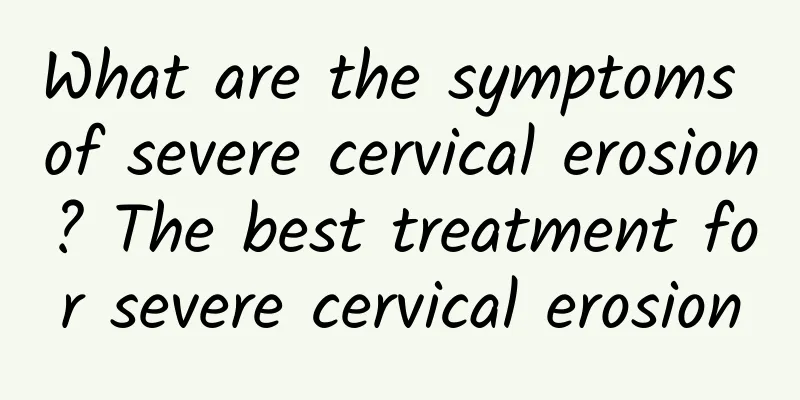Patients with cervical precancerous lesions must use medication scientifically and appropriately

|
Cervical cancer is one of the most common malignant tumors in women and is the disease with the highest incidence rate in female reproductive organs. Clinically, early detection and early treatment are recommended. The medication for patients with cervical precancerous lesions must be scientific and reasonable. Here is a brief introduction to the medication treatment of cervical cancer. The treatment of cervical cancer is divided into atypical hyperplasia, carcinoma in situ, microscopic early invasive cancer, and the treatment of invasive cancer 1. Atypical hyperplasia: If the biopsy shows mild atypical hyperplasia, it is temporarily treated as inflammation, and the scraping is followed up for half a year and biopsy is performed again when necessary. If the lesion persists, it can be observed. For those diagnosed with moderate atypical hyperplasia, laser, freezing, and electric ironing should be used. For severe atypical hyperplasia, total hysterectomy is generally recommended. If you urgently want to have children, you can also follow up regularly and closely after cone excision. 2. Carcinoma in situ: Generally, most people advocate total hysterectomy, retaining both ovaries; some also advocate simultaneous removal of 1-2 cm of the vagina. In recent years, laser treatment has been used at home and abroad, but close follow-up is required after treatment. The occurrence of cervical cancer is the result of the combined effects of many factors. Its treatment is more difficult in the middle and late stages. Many treatment methods are used at the same time. It is recommended that people who are prone to cervical cancer have more routine examinations every year. I hope that the treatment methods introduced here can be helpful for clinical treatment. 3. Microscopic early invasive cancer: Generally, extended total hysterectomy and 1-2 cm of vaginal tissue are recommended. Because the possibility of lymph node metastasis of microscopic early invasive cancer is extremely small, it is not necessary to eliminate pelvic lymphatic tissue. 4. Invasive cancer: The treatment method should be based on the clinical stage, age, general condition, and equipment conditions. Common treatment methods include radiation, surgery, and chemotherapy. Generally speaking, radiotherapy is suitable for patients of all stages; the surgical effect of stage Ib to IIa is similar to that of radiotherapy; cervical adenocarcinoma is slightly less sensitive to radiotherapy, and a combined treatment of surgical resection and radiotherapy should be adopted. The occurrence of cervical cancer is the result of the combined effects of many factors. Its treatment is more difficult in the middle and late stages. Many treatment methods are used at the same time. It is recommended that people who are prone to cervical cancer have more routine examinations every year. I hope that the treatment methods introduced here can be helpful for clinical treatment. |
<<: Can chemotherapy be used after surgery for cervical precancerous lesions?
>>: Analysis of common drugs for cervical precancerous lesions
Recommend
What are the principles of medication for endometrial tuberculosis?
Clinically, the incidence of endometrial tubercul...
How to regulate scanty menstruation
To regulate scanty menstruation, you need to adju...
What are the complications caused by cervical warts?
What are the complications of cervical warts? To ...
A good way to quickly resolve dysmenorrhea
Dysmenorrhea is caused by a woman's weak body...
Why do women have less menstrual volume and dark color?
When women have scanty menstruation, sometimes th...
I got pregnant again 30 days after a medical abortion.
Is it okay to get pregnant again 30 days after a ...
Several major causes of cervical hypertrophy
Cervical hypertrophy is mainly caused by long-ter...
What tests should be done before painless abortion surgery
Many people must have heard of painless abortion ...
Does female cervical erosion affect conception? Common knowledge about female cervical erosion
Cervical erosion is actually a gynecological dise...
How to recover after uterine fibroid surgery How to recover better after uterine fibroid surgery
With the increasing incidence of uterine fibroids...
Infant vaginitis threatens infants and young children
What are the causes and symptoms of infant vagini...
A bowl of corn has only half the calories of a bowl of rice, a good helper for healthy eating
Is the starch in corn the killer of obesity? A su...
Introduction to effective methods for treating cervical cysts
Science and technology are constantly developing,...
Feeling a little greedy and hungry after coming home late? DIY Reduced Sugar Thai Konjac Salad, an Easy Late-Night Snack Without Gaining Weight
It is the best dish to eat with wine when you com...
Is it dangerous to take abortion pills? Yes, it is dangerous.
Taking abortion pills is dangerous. It can induce...









